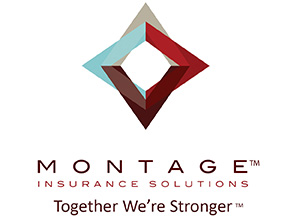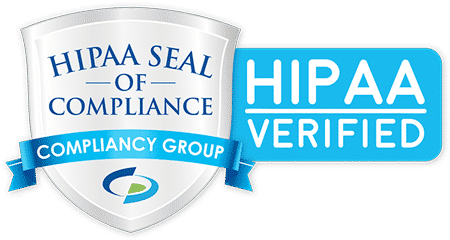In the olden days, an up and coming generation would look proudly to the generation before them for support, wisdom, and reassurance that they could make their mark on the world. Children could look up to our political leaders and dream about making a difference one day by following their examples. As a mother of two young daughters I want only the best for my kids, of course, and I dream of them having a fulfilling and amazing future. However, being a parent is one of the hardest, scariest things on earth, because at some point you know that you will lose control of your kids. All you can do is just pray that you have done all that you could to help them grow into extraordinary human beings.
Today however, not only do parents have to worry about all the things you normally worry about as a parent, but we must also be constantly on guard to make sure our children are not being poisoned by Genetically Modified Foods (GMO’s). Not to mention, the plethora of other deadly chemicals and toxins that are bombarding all of us daily. Today, parents must face a very different battle then ever before. We face our greatest challenge yet, fighting against a food system that is literally killing us silently.
The truth is, most foods today are not safe for human consumption. These foods, or ‘food type products’, are extremely detrimental to the growing minds and bodies of our youngsters. As it stands now, the United States is one of the only developed nations in the world that does not require labeling on GMO foods. This is because the companies that produce and distribute these products are American made companies. These giant Agrotech companies, not only run our food system, but they have a major grip on our political system as well. The way our food system is designed right now, our children and future generations, will have a bleak chance at a healthy, disease, and illness free life. That is, if, we let these corporations have their way. While every generation gets a nickname from the Baby Boomers to Generation X, I would now like to introduce you to, what I call, Generation GMO.
So what does it mean to be apart of Generation GMO? It means that you are one of the millions of children that are being pumped full of artificial and toxic ingredients daily, without any scientific documentation showing that it will not affect your brain development, social skills, metabolic processes, or who you may have the ability to become in the future. From baby formulas, to snacks, to our fruits, vegetables, and meats, our bodies are constantly exposed to genetically modified ingredients that are silently wreaking havoc on our health. From the cradle to the grave, the food industry is laughing all the way to the bank.
I believe this is the number one health issue in the United States right now. I also believe that it should be the first priority of politicians to solve this issue and change the way our foods are being made to protect our children. Food has become poison, and that my friends is a tragedy. Think about this, if we don’t have our children’s health and mental acuity to run our country when we are all gone, then what do we as a nation have to give the world? Will the United States literally eat themselves to death? These questions may sound harsh to you, but the truth of the matter is, we don’t really know the long term affects of eating these foods. I don’t think any of us are prepared to grasp how badly it might be in the future. Unless, we fight for change in the food industry now.
In our current reality parents are secretly lied to about the ingredients in the foods and beverages their children consume daily. Worse yet, most American parents are not even fully aware of the dire situation of our food industry. Nor are they aware of the incredible risk their kids are in everyday when they sit down at the dinner table to eat. If our kids are being poisoned how could this not be the most important topic around? Why is this not on the front page of every major newspaper and magazine? Why aren’t our TV’s flooded with adds about how to protect our families? The answer to all of these questions plain and simple is, greed. Money is the reason, and money rules the world. This issue is, in my opinion, is the most serious and important public health issue ever in our history. Sadly, this problem is rarely ever addressed in the mainstream media, so the mass population continue to be blinded to the reality of what we are doing to our children’s futures every time we sit down to eat.
As a parent, it is my top purpose and priority to protect my kids, and to educated other parents about how something as innocent as the foods we eat, could be silently killing us and turning us into Genetically Modified Humans. You may be thinking this sounds pretty out there, but the closer you look into the food industry the more you will understand what I am talking about. Genetically Modified foods are foods that are created from seeds that have been altered in a lab. These companies will take the DNA of some other species, plant, or bacteria, and actually put it into the DNA of say a tomato plant or even a fish, like salmon. This is done to ‘supposedly’ help more food grow with less waste, less water, and produce a more sustainable plant. However, what these companies don’t want you to know is that none of that is really true. Also, these Genetically Modified foods and seeds have not been tested to see if they are even safe for human consumption. So not only are these companies messing with our natural food supply, but they are also not even concerned with the safety or efficacy of their products. When independent parties have done testing with GMO foods such as corn on laboratory rats the results were frightening. The test animals would develop cancerous tumors, brain delays, allergies, and digestive issues.
“Most studies with GM foods indicate that they may cause hepatic, pancreatic, renal, and reproductive effects and may alter haematological [blood], biochemical, and immunologic parameters, the significance of which remains to be solved with chronic toxicity studies.”
– Dona A, Arvanitoyannis IS. Health risks of genetically modified foods. Crit Rev Food Sci Nutr. 2009; 49: 164–175
Scary isn’t it? When you take a look at what has happened to the health of individuals all across this nation since these foods have been introduced into the market, you can’t help but see the direct line pointing straight to our foods. We have seen a rise in all of the health issues mentioned above and then some! The rise in childhood developmental issues as well as cancers has skyrocketed in the last two decades. More and more we are seeing children developing serious health and mental issues, and this is becoming the norm. The scariest and saddest part to me is that most people aren’t questioning our food sources as a possible issue, solely because the education about these issues is not mainstream.
Large food corporations pay millions of dollars to promote deceptive advertising that lures children and parents to buy their products. These products contain deadly, brain altering, and even DNA damaging chemicals and ingredients that are promoted as ‘child friendly’, and even sometimes as ‘health’ foods. Many parents are starting to wake up to this reality, but sadly, many are still in the dark. Even when parents start to question ingredients in certain foods, these companies will often come out with a backlash campaign that is designed to fool the public back into thinking their product really is safe. For example, a few years ago the devastating effects of High Fructose Corn Syrup were starting to circulate among parents of young children and people were getting upset. So, the company that makes this product started to put out TV and print ads of a young child asking if this product was safe, and their parent gently telling them that it was totally natural and actually good for them to consume! These adds then reassured many parents that the previous information about this toxic product must have been false, and that it was ok to keep feeding it to their kids. When I saw these ads I was so upset. I made it my mission over the next few months to talk to as many parents as I could about why, this ad was a straight up lie, and why they should never let their kids eat this artificial sweetener.
There is lots of conflicting information out there about the state of GM foods and if it is really safe. So, let’s get the facts straight right now about GMO’s. GMO’s have not been tested for human safety. We know that in lab rats GMO consumption is linked to allergies, cancerous tumors, heart issues, and even death. We know that GMO’s do not solve world hunger, as their makers have advertised. We know that most developed nations in the world do not approve of GMOs and have banned their sale and import. We know that GM foods lack nutritional value. We know that parents don’t even know when they are feeding their children GMO’s since the U.S. does not require these ingredients to be labeled. We know that kids of all ages are experiencing more and more health issues everyday. And we know that eating fresh healthy foods is our God Given Right. My question to you today is why are we letting this happen to us?
Americans are amazingly brilliant and our future generations deserve so much more than what this system is serving them. I know that together we can change Generation GMO, to Generation Non-GMO: the generation that fought for their health, and got it back. I encourage you to join this crusade of education and empowerment, so together we can save our children and our future. I see the future of our nation with bright, healthy, creative children flourishing. What do you see?




